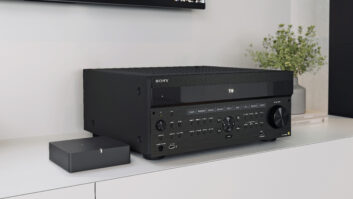Room setup and calibration recommendations for gaming systems
It used to be that video games received no respect in the sound and video department, and for good reason.

HEROLD, ABOUT.COM PHOTOS: CHARLES Times have definitely changed. Chances are that gaming consoles are among the most advanced source components in your systems, and they’re capable of delivering top-drawer sound and picture quality, as well.
If you’re not a gamer, then you may have no idea what constitutes a good gaming experience, or how to set up a room to achieve maximum gaming potential. The recommendations that follow were sourced from my technical editor, Chase Walton, who is younger and more into gaming than I am. In other words, pay close attention if you want to tap into the market potential of gaming.
LET THERE BE LIGHT
Be prepared to design a room that operates effectively with a relatively high amount of ambient light. There are things that you need to see while gaming—everything from an instruction booklet, to a guitar,

Gaming is a social activity, so there may be people in the room who want to interact with each other. Clockwise from top: Speed Racer, Iron Chef America, Big Beach to a keyboard to access online “cheats” and walkthroughs. Plus, gaming is a social activity, so people in the room will need to move around and interact (think Wii Sports). Gaming sessions also tend to last for quite a while, screens are bright, and you must focus intently on the screen with less blinking than normal. In a completely dark room, your eyes become fatigued, and video gameinduced eye fatigue is not fun.
GET THE PICTURE?
Picture size and quality are important for gaming, but not in the same way that they are for movies and TV. For example, in a screening room, you would ideally like a screen size up to 50 degrees wide. Believe it or not, some gamers that I know prefer a 42- to 46-inch screen for a 10- to 12-foot viewing distance. That’s not big by anyone’s standards. By the same token, many games feature addictive multiplayer action that divides the screen into two or more parts when all the players are using the same system. A gigantic projection screen suddenly becomes just about right when each player only has a quarter of the total image area.
Size screen may seem like an irreconcilable difference, but I see it as an opportunity for you to exhibit your best problem-solving skills as a custom integrator. Here is a hint: Some gamers use a large projection system with friends and a smaller direct-view

display for themselves.
Then you have picture quality. Keep in mind that video games are objective-based. You watch a movie to enjoy acting, directing, writing, and cinematography. You play a video game to kill things, accomplish missions, win points, score points, or perform some other act that demonstrates your superiority over man and machine. How the picture looks is important, but it’s more important that it enhances your performance while playing the game. For example, lots of games are dark, because dark is an easy way to make a game hard. If your black level is too low, then you may miss something important, like a barely visible box hidden in shadows that holds the key to unlocking your way to the next level. I’m not pushing for blown-out blacks, but you

have to see what you’re doing.
Many games include black level (brightness) test patterns and adjustments within the game itself. Some games, like Halo 3, go so far as to include patterns for aspect ratio, contrast, color, tint, and sharpness. You need to use one of these games to calibrate the display’s input for the gaming system. Keep in mind, too, that gaming systems are often flexible in terms of the color space (RGB, YCbCr, etc.), reference black/white levels (16-235, 0-255, etc.), and resolution/frame rate that they output. Look in the gaming system’s setup menu to make sure these base settings are correct for the type of display you’re using.
LISTEN UP, STAY ALIVE
Superior sound design played back through a system with precise imaging increases your chances to “stay alive” in a game and in position to accomplish your objectives. You may not know this, but a number of games feature a true 7.1 audio mix. The game’s internal mix engine routes sounds on the fly, so that you know where the baddies are hiding, regardless of which direction your character is facing. Gamers may be picky about imaging for movies, but they get fanatical about it when their virtual survival is at stake. Hearing everything on the map around you is often times just as important as seeing it. Sound localization gives you an advantage over people who are listening on TV speakers, and advantages are what gaming is all about.
Anthony Grimani (agrimani@ pmiltd.com) is president of Performance Media Industries, a California-based acoustical engineering firm specializing in home theater design and calibration.







